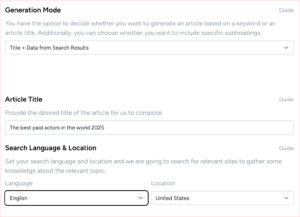In today’s digital landscape, crafting an efficient Content Management System (CMS) isn’t just a technical challenge—it’s crucial for ensuring your content resonates with your audience and drives engagement.
In our deep dive into best practices and strategies for designing effective CMS, we’ll explore how to tailor systems that are not only user-friendly but also robust enough to handle the dynamic demands of digital navigation.
From understanding the nuances of workflow management to integrating cutting-edge technologies, we’ll cover the essential components that can make or break your content strategy.
Whether you’re building from scratch or refining an existing platform, you’ll find actionable insights that can transform the way you manage digital content.
Content Management System Overview
A Content Management System (CMS) lets you create, manage, and modify content on a website without needing specialized technical knowledge. Essentially, it’s your digital toolbox allowing you to keep your site dynamic and relevant. You’ll find that a robust CMS can support a variety of content types, from text and images to videos and downloadable files.
With a CMS, you’re not just throwing content up on the web; you’re strategically placing it to engage your audience. It supports your SEO efforts by simplifying content updates and ensuring your site remains fresh.
Plus, most CMS platforms include features for user roles and permissions, enabling you to control who can edit what. This makes managing your site’s content not only easier but also more secure.
User-Friendly Interface Design
A user-friendly interface in your CMS ensures you can efficiently manage and update content without frustration. It’s crucial that you find tools that feel intuitive to use. Opt for layouts that are clean and straightforward, minimizing clutter to avoid overwhelming you with options. Ensure the navigation is logical, placing common. tasks at your fingertips. You’ll want interactive elements like buttons and menus to be responsive and easy to understand, so you don’t waste time guessing your next steps.
Remember, customization features can also enhance usability. Tailoring the dashboard to fit your specific needs helps streamline your workflow, making it quicker to access frequently used functions. You’ll appreciate a system that adapts to your preferences, making your content management tasks less of a chore and more of a breeze.
Effective Information Architecture
Effective information architecture organizes your content in a way that makes sense to you and your users, ensuring everyone can find what they need quickly and effortlessly. It’s about creating clear paths and logical flows through your site or system. Think of it as building a roadmap that guides users without confusion or dead ends.
You’ll want to categorize and label your content in intuitive ways. This involves understanding your audience’s needs and expectations. Don’t just organize based on what you think makes sense; research and test with real users.
Use straightforward language that resonates with them, and ensure your search functionality is robust. This strategy enhances user experience by minimizing frustration and maximizing efficiency, keeping your audience engaged and satisfied.
Seamless Integration of Tools
Integrating tools seamlessly into your content management system streamlines your workflow and enhances user interaction. You’ll find it easier to manage content across multiple platforms, thanks to the unified approach. By consolidating analytics, SEO, and social media tools, you’ll gain insights and push content effectively without switching between applications.
Ensure each tool you integrate communicates well with others; compatibility is key. Select tools that offer APIs and are known for easy integration. This not only simplifies your tech stack but also reduces training time for your team.
You’ll notice quicker updates, better compliance with data standards, and a more cohesive user experience. Focus on integration quality over quantity to keep your system efficient and manageable.
Scalability and Flexibility Considerations
As you design your content management system, consider scalability and flexibility to accommodate future growth and changes. It’s crucial that your system can handle increasing loads and users without performance hiccups.
Think modular.
Data Security and Privacy Measures
Ensuring your content management system secures user data and maintains privacy is essential. You’ll want to implement robust encryption for data at rest and in transit, which shields sensitive information from unauthorized access. It’s also vital to regularly update your software to protect against vulnerabilities.
Furthermore, consider incorporating multi-factor authentication (MFA) to enhance access security. This requires users to provide multiple pieces of evidence before gaining system entry, significantly reducing the risk of breaches.
Don’t forget to establish clear privacy policies that comply with global standards like GDPR or CCPA, ensuring you’re transparent with users about how their data is handled. Educating your team on these protocols is just as important to maintain a secure environment.
Content Workflow Optimization
Optimizing your content workflow streamlines the entire creation and distribution process, boosting efficiency and productivity. By establishing clear roles and responsibilities, you’ll ensure that everyone knows their tasks and deadlines, reducing bottlenecks and confusion.
It’s crucial to select the right tools that integrate seamlessly with your team’s needs, allowing for real-time collaboration and updates.
Implementing standardized templates and guidelines helps maintain consistency across all content, ensuring that your brand’s message remains clear and impactful.
Don’t forget to set up a flexible yet structured approval process that accommodates quick reviews while upholding quality standards. This approach not only speeds up production but also enhances the overall quality of your content, keeping it aligned with your strategic goals.
Performance Monitoring and Analysis
Monitoring your content management system’s performance regularly helps you understand its impact and identify areas for improvement. By analyzing usage patterns and user feedback, you’ll pinpoint bottlenecks and opportunities to enhance the system’s efficiency and user satisfaction.
It’s crucial to set clear, measurable goals for what you’re monitoring, whether it’s load times, error rates, or user engagement metrics.
Implement tools that provide real-time analytics to keep a pulse on how well your system is performing. This data not only informs you about current issues but also helps predict future challenges.
Remember, continuous monitoring isn’t just about finding faults; it’s about proactively improving the system to ensure it meets users’ evolving needs efficiently and effectively.
How do content management systems impact SEO and search engine visibility?
Content management systems impact SEO and search nor engine visibility by organizing and optimizing your content for search engines.
They help you create structured, relevant, and easily searchable content, enhancing your website’s visibility and ranking.
What are the typical costs involved in implementing a new content management system?
When implementing a new content -management system, costs typically include software licenses, customization fees, training expenses, and ongoing maintenance.
It’s essential to budget for these elements to ensure a successful implementation.
Can content management systems help in achieving compliance with data protection regulations like GDPR?
Yes, content management systems can aid in achieving compliance with data privacy regulations like GDPR by enabling secure storage, access control, and tracking of sensitive information.
They help streamline processes and ensure data security.
Conclusion
In conclusion, when designing effective content management systems, remember to prioritize user experience, streamline workflow processes, ensure scalability, maintain security measures, and invest in regular updates.
By following these best practices and strategies, you can create a system that enhances productivity, collaboration, and overall efficiency within your organization.
Stay proactive and adaptable to meet evolving content management needs and drive success in the digital realm.





